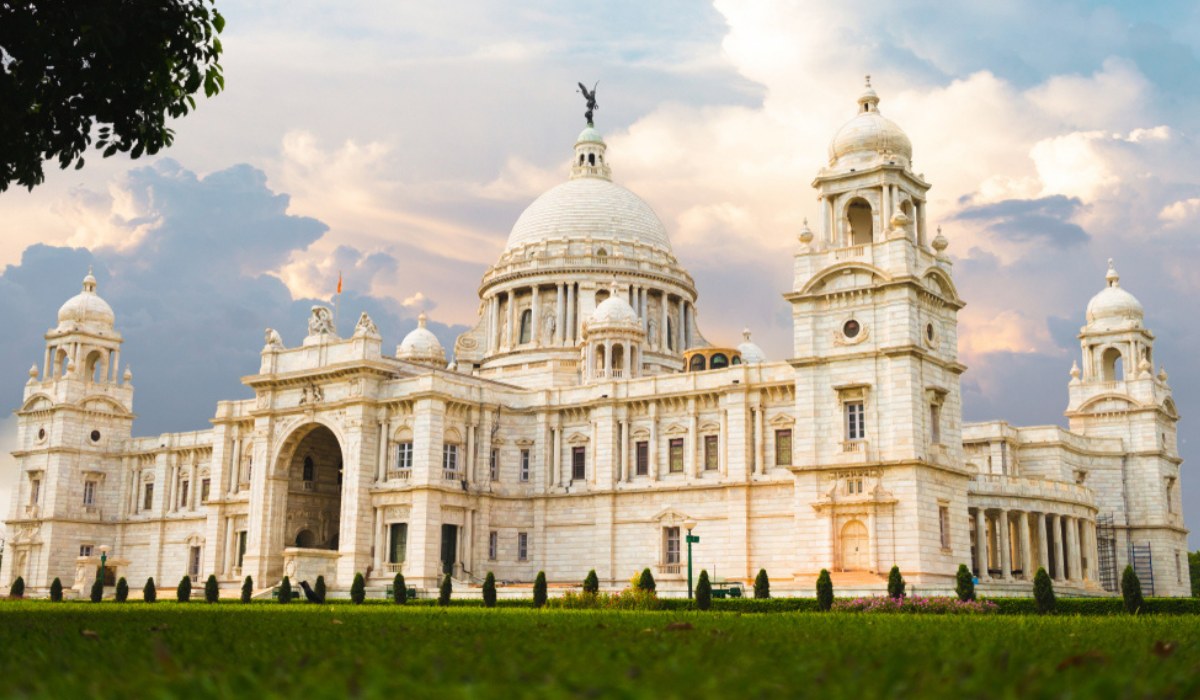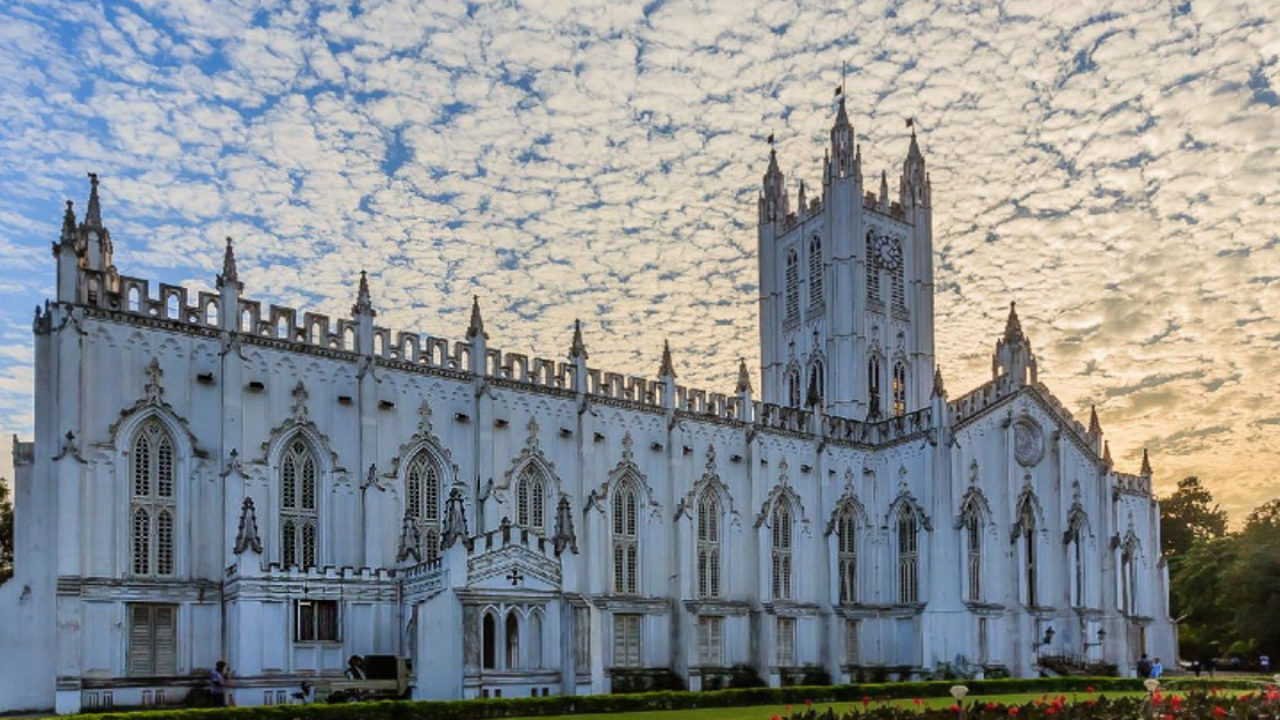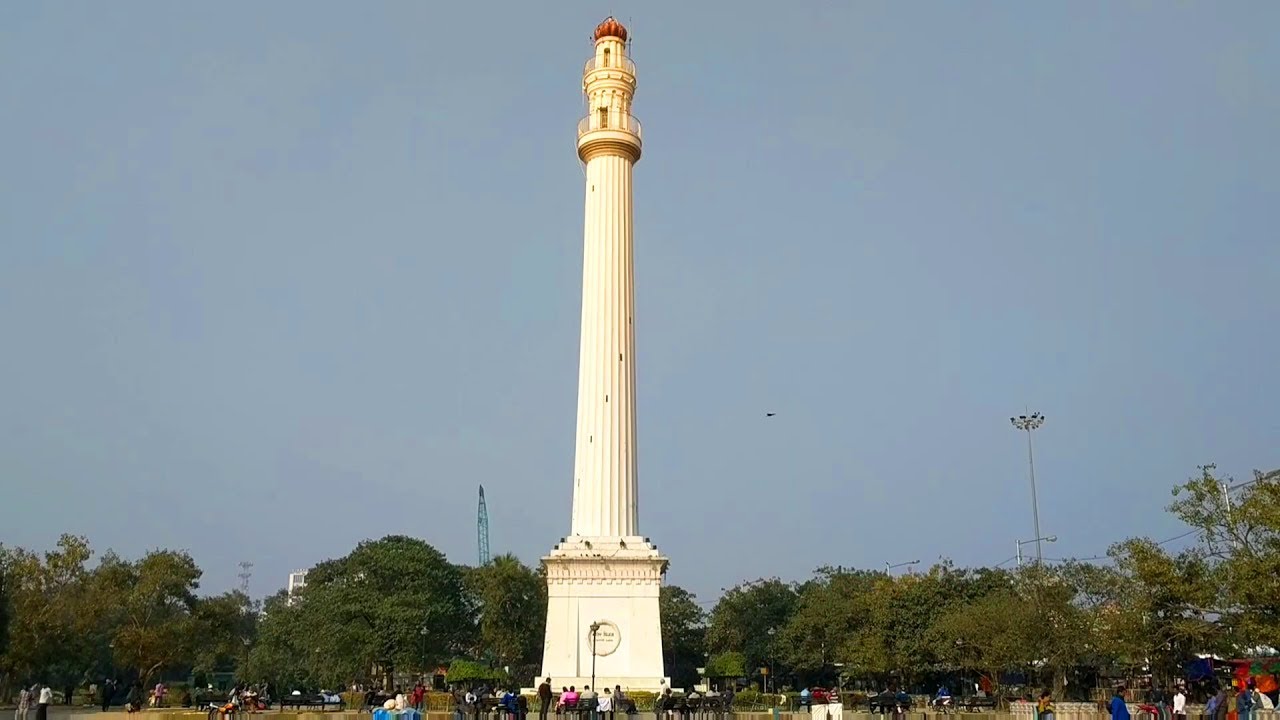Introduction
In the late 17th century, the three villages that predated Calcutta were ruled by the Nawab of Bengal under Mughal suzerainty. After the Nawab granted the East India Company a trading licence in 1690,[19] the area was developed by the Company into an increasingly fortified trading post known as Fort William. Nawab Siraj ud-Daulah occupied Calcutta in 1756, and the East India Company retook it the following year. In 1793 the East India company was strong enough to abolish native rule, and assumed full sovereignty of the region. Under the company rule and later under the British Raj, Calcutta served as the capital of British-held territories in India until 1911. In that year, after assessing its geographical location, combined with growing nationalism in Bengal (Calcutta became the centre for the Indian independence movement), the British moved the capital to the relatively more centrally located New Delhi.

Victoria Memorial
The Victoria Memorial is a large marble building in Central Kolkata,
which was built between 1906 and 1921. It is dedicated to the memory
of Queen Victoria, now a museum under the auspices of the Ministry
of Culture, and is the largest monument in the world which is
dedicated to a royal. The memorial lies on the Maidan and is one of
the famous monuments of Kolkata.
In January 1901, on the death of Queen Victoria, then Lord Curzon,
suggested the creation of a fitting memorial. Lord Curzon proposed
the construction of a grand building with a museum and gardens.
The Prince of Wales, laid the foundation stone on 4 January 1906,
and it was formally opened to the public in 1921. In 1912, before
the construction of the Victoria Memorial was finished, King George
V announced the transfer of the capital of India from Kolkata to New
Delhi. Thus, the Victoria Memorial was built in what would be a
provincial city rather than a capital. The Victoria Memorial was
mainly funded by British officials and individuals of India. The
politicians and people of India responded generously to Lord
Curzon's appeal for funds, and the total cost of construction of the
monument, amounting to one crore, five lakhs of Rupees, was entirely
derived from their voluntary subscriptions.

Fort William
Fort William is a fort in Hastings, Calcutta (Kolkata). It was built
during the early years of the Bengal Presidency of British India. It
sits on the eastern banks of the Hooghly River, the major
distributary of the River Ganges. One of Kolkata's most enduring
Raj-era edifices, it extends over an area of 70.9 hectares. The fort
was named after King William III. In front of the Fort is the
Maidan, the largest park in the country. An internal guard room
became the Black Hole of Calcutta. Today it is the Headquarters of
Eastern Command of the Indian Army.
Robert Clive started rebuilding the fort in 1758, after the Battle
of Plassey (1757); construction was completed in 1781 at a cost of
approximately two million pounds. The area around the Fort was
cleared, and the Maidan became "the Lungs of Kolkata". It stretches
for around 3 km in the north–south direction and is around 1 km
wide. The Old Fort was repaired and used as a customs house from
1766 onwards. The headquarters of the Indian Ordnance Factories was
established in 1775 at Fort William. Today, Fort William is the
property of Indian Army. The headquarters of Eastern Command is
based there, with provisions for accommodating 10,000 army
personnel. The Army guards it heavily, and civilian entry is
restricted. Much of Fort William is unchanged, but St Peter's
Church, which used to serve as a chaplaincy centre for the British
citizens of Kolkata, is now a library for the troops of HQ Eastern
Command. A war memorial has been created at the entrance of the
fort, and the fort also houses a museum which displays artifacts
from the Indo-Pakistani War of 1971, especially those related to the
battles in the Eastern sector and the Bangladesh Liberation War.

St. Paul's Cathedral
In 1819, at the request of Francis Rawdon-Hastings, 1st Marquess of
Hastings – then Governor-General of Bengal – Royal Engineers officer
William Nairn Forbes produced a design for the proposed cathedral;
however, it was not accepted as it was deemed too expensive to
build. Bishop Middleton suggested as a site for the new cathedral
the part of the city now known as "Fives Court", where the cathedral
now stands. In 1762 the area had been described as a forest so wild
that it harbored tigers and at first it was regarded as "too far
south" to serve as a location for the cathedral. Middleton died in
1822 before building plans took shape. The next three bishops –
Reginald Heber, Thomas James and John Turner – all died after brief
tenures, and it was not until 1832, under Bishop Daniel Wilson, that
the project to build the cathedral was revived.
The architectural design of the cathedral is "Indo-Gothic", a Gothic
architectural style designed to meet the climate of India. Following
the 1897 earthquake and the subsequent massive earthquake of 1934,
when Calcutta suffered substantial damage, the cathedral was
reconstructed to a revised design. The cathedral complex has a
library, situated over the western porch, and a display of plastic
art forms and memorabilia.

Shaheed Minar
The Shaheed Minar (English: Martyrs' Monument), formerly known as
the Ochterlony Monument, is a monument in Kolkata that was erected
in 1828 in memory of Major-general Sir David Ochterlony, commander
of the British East India Company, to commemorate both his
successful defense of Delhi against the Marathas in 1804 and the
victory of the East India Company’s armed forces over the Gurkhas in
the Anglo-Nepalese War, also known as the Gurkha War. The monument
was constructed in his memory. It was designed by J. P. Parker and
paid for from public funds.
On 9 August 1969, it was rededicated to the memory of the martyrs of
the Indian freedom movement and renamed the "Shaheed Minar," which
means "martyrs' monument" in both Bengali and Hindi, by the then
United Front Government in memory of the martyrs of the Indian
independence movement. The present government has decided to
illuminate the tower during evenings and allow visitors to the top.
The last people to have been up there were former governor Gopal
Krishna Gandhi and his family.